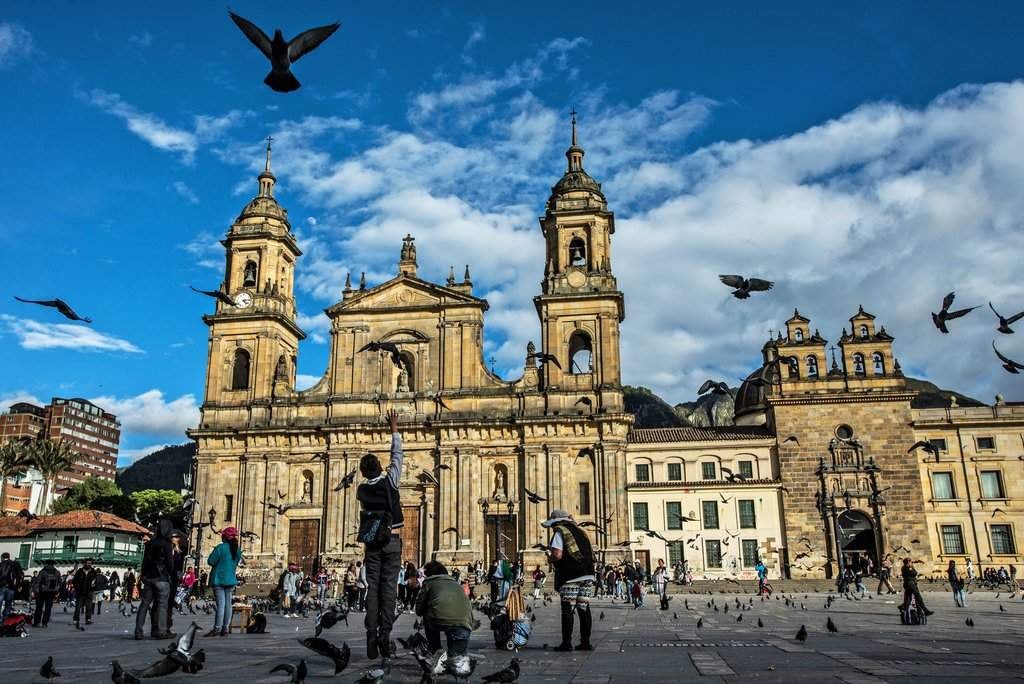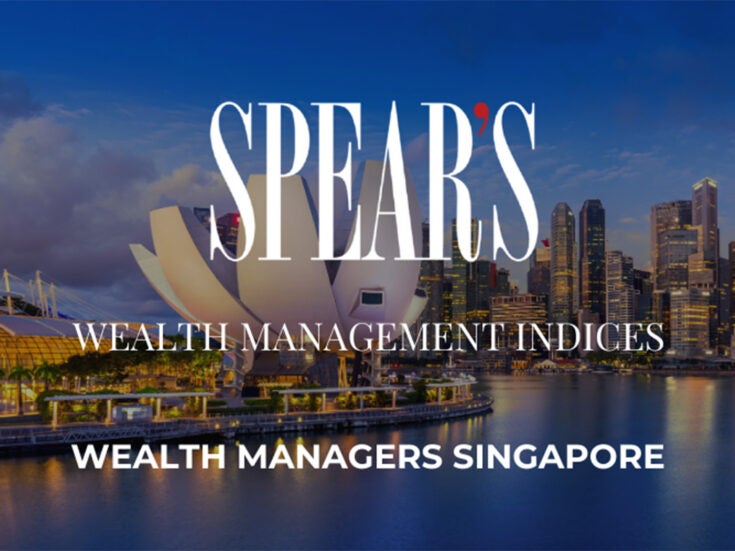
In Bogotá and beyond, the history and varied cultures of a complex nation are reflected in its architecture, food, and above all art, says Teresa Levonian Cole
I was gazing at a perfect hemisphere, made entirely of gold. It looked like what the ancient Celts might have come up with, had they been teleported into 1920s Art Deco Paris. ‘Hammered, embossed helmet showing great skill,’ the label noted. ‘500BC-700AD.’
The Gold Museum is perhaps Bogotá’s most famous cultural attraction, with 55,000 exhibits showcasing the evolving technological skills and creative talents of the country’s pre-Columbian indigenous peoples. The helmet was the work of the Quimbaya, master goldsmiths and one of a dozen-odd tribal groups whose hammered, embossed, granulated and filigree articles would inflame Spain’s desire.
Unlike so many eagerly anticipated highlights, this museum did not disappoint. These flights of artistic fancy held me in their thrall. Occasionally, pragmatic wit prevailed over gravitas. Whereas fully fledged shamans, central to these societies, were depicted with stylised wings and beaks, alluding to their ecstatic ‘flight’ to survey the world, apprentice shamans were represented with flattened nose plug and clipped wings. Perhaps I shouldn’t have laughed. One wonders what the Spanish priests must have thought when they met their local counterparts, caparisoned in real feathers, and dripping gold.
Few indigenous people survived the Conquest of 1537, but the territorial heirs of the Muisca, who inhabit present-day Bogotá, show no less artistic bent. With five annual art fairs, led by the international ArtBo (35,000 visitors in 2016), and 120 galleries across the city, Bogotá is the rising star of the contemporary art scene. Concerts in parks featuring local and international musicians – from classical to hip-hop – are organised and funded by the city, which also hosts the biennial Festival Iberoamericano, the largest theatrical event in Latin America. Even roadside bookstalls are laden with weighty tomes from Plato to Kierkegaard – not to mention works by the omnipresent ‘Gabo’ – Gabriel García Márquez. Not bad for a city living down a reputation for, well, trouble…
The first thing you notice is the graffiti that adorns everything. ‘In Bogotá, since the election of a leftist mayor in 2004, street art is not only tolerated but encouraged,’ Federico Ruiz, an art dealer who arranges specialist art tours for wealthy collectors, told me.
Ruiz holds the key to the city’s cultural elite, opening doors to anything from a private dinner in the Gold Museum to an artist’s creative sanctum. He took me to Nueveochenta, a gallery in a converted 1940s house, co-owned by César Gaviria, the man who, as president of Colombia from 1990 to 1994, finally put paid to Pablo Escobar and emasculated the drugs cartels. We visited the influential El Museo gallery, and a more recent opening, Lamazone. A breathtaking space with airy, industrial feel, it showcases works by Modernist Colombian artists.
But we began at the raw end, in a neighbourhood which has yet to succumb to gentrification: the red-light district of Santa Fé. ‘I bring my clients here, and they love it,’ said Ruiz, who was referring not to the fleshy attractions paraded in grimy doorways, but to some of the city’s most interesting murals, curated by street artist Guache (‘Lout’) and executed along two entire blocks by 20 artists, home-grown and foreign. ‘Not only does the government not censor subject matter, the artists are paid by the mayor,’ Ruiz explained.

Elsewhere, the political message was more overt. Along the busy Avenida Dorada, the portrait of murdered journalist Jaime Garzón overlooked the traffic while, opposite, a tableau served as memorial to the ‘political genocide’ of around 4,000 members of the Unión Patriótica, a political party co-founded in 1985 by the Revolutionary Armed Forces of Colombia (FARC). The effects of a war involving narco cartels, right-wing paramilitaries, the leftist FARC guerrillas, and government troops run deep. Over the past 55 years, it has claimed an estimated 220,000 lives.
Small wonder, then, that the peace negotiations between the government and FARC were on everyone’s lips during my visit. ‘There is a pervading sense of optimism,’ said Ruiz. ‘It’s not only the peace talks, but the country’s economic growth over the last decade. I can feel it in the art market.’
Optimism and confidence are also reflected in the steady rise in tourism, the opening of the Four Seasons and W hotels, and a stellar gastronomic scene. Alongside toothsome shops emblazoned with international kudos, boutiques of homespun talent – such as designers Pepa Pombo, Andrés Otálora, and Silvia Tcherassi – flourish. In contrast, a huge plot of land in the elegant Zona G residential district lies empty behind high walls – the home of an executed drug lord, a sombre reminder of the bad old days.
The charm of Bogotá, perched on a plateau at 2,640 metres, lies in its diversity. While bright young things sip cocktails on the rooftop of the minimalist-chic Click Clack hotel or nibble Japanese delicacies at Kuru, life in the historic centre of La Candelaria, in the shadow of massive colonial-era stone churches, beats to a different rhythm. Here, amid colourful houses lining steep, narrow streets, you can sit on a rickety balcony and sup on traditional ajiaco soup, made of three types of potato and chicken and served with cream, avocado and corn.
A short hop away, emerald dealers mill around the area known as ‘The Beach’, unwrap gems the size of molars, and hold them up to the sun. A deal is sealed in the time-honoured way, with a handshake. It is an arcane trade, with many pitfalls for the uninitiated.
Emeralds did not escape the Conquistadors’ attentions – they were transported to their treasure store, the northern port of Cartagena, to await galleons bound for Spain. But this beautiful, Unesco-listed and wealthy colonial city is far from the only one worth visiting. From Bogotá, Villa de Leyva is an easy three-hour drive through dairy country, passing the ancient Muisca salt mines, reopened as a magnificent underground cathedral in 1995; a sinister, 16th-century ‘indoctrination church’ in whose four tiny external chapels, named after the Evangelists, indigneous people were tortured until they accepted the cross; and,
for light relief, the pretty town of Ráquira, famed for its handicrafts.
The sun was setting as we reached Leyva, the façade of the cathedral on the Plaza Mayor bathed pink against the Andes. As it was midweek, the vast cobbled square was all but deserted, just a few locals lingering
at bars. Today, the surrounding buildings, whitewashed, with imposing stone entrances beneath coats of arms, serve as museums to the town’s key role in Colombia’s revolution of 1810 – some 240 years after the town was founded by the Spanish. Off the plaza, narrow streets house shops piled with geometrically patterned mochilas (woven bags) and hand-loomed ponchos. Turn off, and you might find a hidden square with
a silent monastery. It’s heavenly.
I spent two days exploring Leyva and its environs, which included ‘El Infiernito’ – a 2,000-year-old sacred Muisca site encompassing an observatory, high shaman’s tomb and ground for fertility rights, in which 30 phallic monoliths stand sentinel. The Dominican friars of the monastery of Ecce Homo must have wept.
On the drive back, my guide pointed to an invisible crater lake. ‘Guatavita,’ she said. ‘It’s the lake into which the Muisca chief would sail, covered in gold dust, to offer jewels
to appease the gods. This practice gave rise to the El Dorado legend.’
From this golden past, it seems, Bogotá is being reborn, its shining star once more in the ascendant.
Teresa Levonian Cole travelled with the Ultimate Travel Company (theultimatetravelcompany.co.uk) and stayed at the Four Seasons (fourseasons.com) and W hotels (starwoodhotels.com) in Bogotá, and at Casa Terra in Villa de Leyva (hotelcasaterra.com)
Web
federicoruiz.info
colombiaemeraldtours.com









